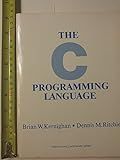Best GTKmm Programming Guides to Buy in December 2025
To link GTKmm with g++ on Linux, you first need to install the gtkmm development package using your package manager. This package includes all the necessary header files and libraries required to compile GTKmm programs.
Once you have the gtkmm development package installed, you can compile your GTKmm program using the g++ compiler with the appropriate flags. You need to include the gtkmm headers in your source code, and then use the -Wall flag to enable all warnings, -g flag for debugging symbols, and -o flag to specify the output file name.
Next, you need to link the GTKmm libraries to your program using the -lgtkmm-3.0 flag. Additionally, you may also need to link other required libraries such as gdkmm-3.0, atkmm-1.6, giomm-2.4, and glibmm-2.4 depending on the dependencies of your program.
After setting up the compilation and linking process, you can run the compiled executable by executing the output file produced by the g++ compiler. This will launch your GTKmm program on Linux with all the necessary libraries linked properly.
What is the difference between static and shared gtkmm libraries in terms of linking with g++ on Linux?
Static libraries are linked at compile time and become part of the executable file, whereas shared libraries are linked at runtime and are loaded separately by the operating system.
When linking with g++ on Linux, linking with a static gtkmm library will result in a larger executable file size as the library code is included in the executable. On the other hand, linking with a shared gtkmm library will result in a smaller executable file size, but the library code will need to be available on the system at runtime for the executable to run.
Overall, the main difference lies in how the library code is linked and loaded into the executable, as well as the resulting file size and portability of the executable.
What is the function of the -l flag in g++ linking?
The -l flag in g++ linking is used to specify a library to link with the program being compiled. When compiling a program, the -l flag is followed by the name of the library without the "lib" prefix or the file extension.
For example, if you want to link with the math library (libm.a), you would use the -l flag like this:
g++ main.cpp -o output -lm
This will link the math library with the program during compilation.
What is the significance of linking order when using g++ on Linux?
When using g++ on Linux to compile a program, the order in which the source files and libraries are specified on the command line can be significant.
In general, when linking a program with g++, the order in which source files and libraries are specified on the command line can affect the linking process. This is because the linker processes files and libraries in the order they are given, and resolves symbols in the order they are encountered.
For example, if a source file depends on symbols defined in a library, that library should be specified after the source file. If the library comes before the source file on the command line, the linker may not be able to resolve the symbols.
In some cases, the order of source files and libraries may not matter, especially if there are no circular dependencies among them. However, it is good practice to specify source files first, followed by libraries, to avoid any potential issues with symbol resolution during the linking process.



